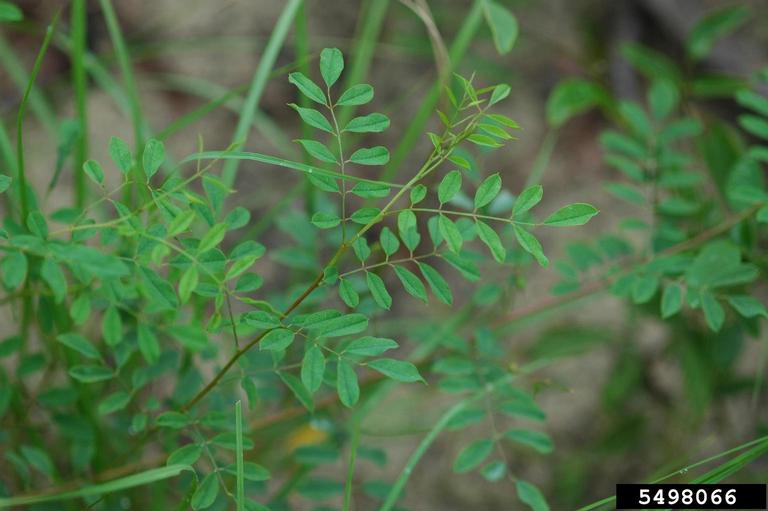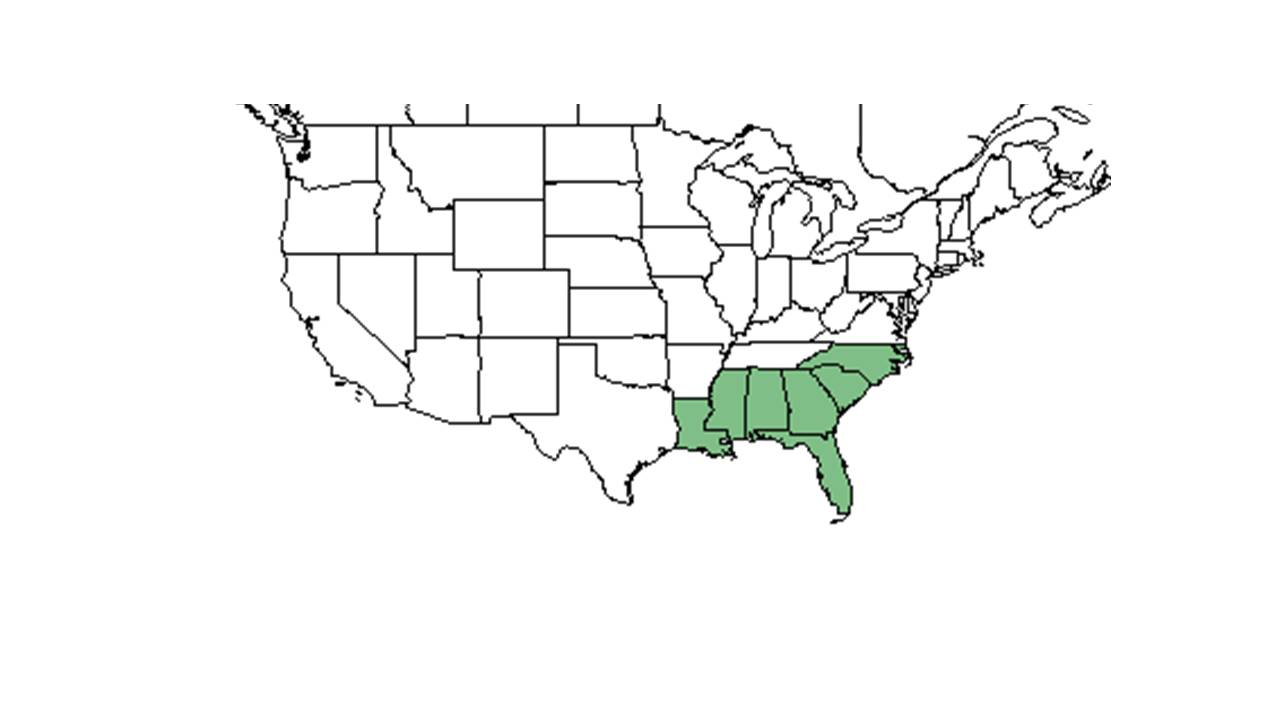Difference between revisions of "Indigofera caroliniana"
(→Ecology) |
|||
| Line 36: | Line 36: | ||
===Phenology=== <!--Timing off flowering, fruiting, seed dispersal, and environmental triggers. Cite PanFlora website if appropriate: http://www.gilnelson.com/PanFlora/ --> | ===Phenology=== <!--Timing off flowering, fruiting, seed dispersal, and environmental triggers. Cite PanFlora website if appropriate: http://www.gilnelson.com/PanFlora/ --> | ||
| − | + | ''I. caroliniana'' has been observed flowering in April, June through August, and in December with peak inflorescence in July.<ref name="FSU Herbarium"/><ref>Nelson, G. [http://www.gilnelson.com/ PanFlora]: Plant data for the eastern United States with emphasis on the Southeastern Coastal Plains, Florida, and the Florida Panhandle. www.gilnelson.com/PanFlora/ Accessed: 12 DEC 2016</ref> It has been observed fruiting June through September.<ref name="FSU Herbarium"/> | |
<!--===Seed dispersal===--> | <!--===Seed dispersal===--> | ||
<!--===Seed bank and germination===--> | <!--===Seed bank and germination===--> | ||
| + | |||
===Fire ecology=== <!--Fire tolerance, fire dependence, adaptive fire responses--> | ===Fire ecology=== <!--Fire tolerance, fire dependence, adaptive fire responses--> | ||
This species occurs in areas that is burned. <ref name="FSU Herbarium"/> | This species occurs in areas that is burned. <ref name="FSU Herbarium"/> | ||
Revision as of 15:07, 2 November 2018
| Indigofera caroliniana | |
|---|---|

| |
| Photo by Karan A. Rawlins, University of Georgia, Bugwood.org | |
| Scientific classification | |
| Kingdom: | Plantae |
| Division: | Magnoliophyta - Flowering plants |
| Class: | Magnoliopsida – Dicotyledons |
| Order: | Fabales |
| Family: | Fabaceae ⁄ Leguminosae |
| Genus: | Indigofera |
| Species: | I. caroliniana |
| Binomial name | |
| Indigofera caroliniana Mill. | |

| |
| Natural range of Indigofera caroliniana from USDA NRCS Plants Database. | |
Common name: Carolina indigo
Contents
Taxonomic notes
Description
Where this species is found, it is frequent. [1]
"Suffruticose herb 0.5-1.2 (2) m tall. Leaves odd-pinnate, 5-10 cm long with a slightly strigillose rachis; leaflets 9-15, mostly obovate to oblanceolate, 1-2.5 cm long, 5-10 mm wide, minutely strigillose on both surfaces, trichomes appearing as though attached at their middle, estipellate. Racemes pedunculate, axillary or terminal, 6-20 cm long usually longer than subtending leaf, slender, with numerous, loosely arranged flowers; pedicel ca. 1 mm long, subtended by a triangular, subulate bract 0.8-1 mm long, lobes 0.20.4 mm long; petals pinkish to yellowish brown, the standard and keel 5-6 mm long, the wings 1-2 mm shorter and adherent to the laterally pouched keel petals; stamens diadelphous, 9 and 1, with the connective extended above the anthers. Legume 5-10 mm long, short-stipitate, beaked, 1-3 seeded." [2]
Distribution
Ecology
Habitat
It is found along the edges of flatwoods, mixed woodlands, upland ridges, deciduous forests, slash pine-hardwood stands, sand pine scrub, and sand ridges. [1] This species grows in sand and sandy loam in open areas. [1] This species also occurs outside of its natural environments in human disturbed areas such as open fields, bulldozed scrub oak sand hills, clobbered slash pine and hardwood fields, and wood pastures. [1] Associated species include Longleaf pine, Turkey oak, Slash pine, Sand live oak, myrtle oak, sand pine, chapman oak, Cuthbertia, Rhynchosia, and Pediomelium, Shortleaf pine, red oak, Mockernut hickory, Wiregrass, and Bluejack oak. [1]
Phenology
I. caroliniana has been observed flowering in April, June through August, and in December with peak inflorescence in July.[1][3] It has been observed fruiting June through September.[1]
Fire ecology
This species occurs in areas that is burned. [1]
Pollination
The following Hymenoptera families and species were observed visiting flowers of Indigofera caroliniana at Archbold Biological Station: [4]
Halictidae: Lasioglossum placidensis
Megachilidae: Anthidiellum perplexus
Use by animals
Deyrup observed these bees, Anthidiellum notatuin rufimaculatum, A. perplexum,Megachile albitarsis on I. caroliniana.[5]
Conservation and management
Cultivation and restoration
Photo Gallery
References and notes
- ↑ 1.0 1.1 1.2 1.3 1.4 1.5 1.6 1.7 Florida State University Robert K. Godfrey Herbarium database. URL: http://herbarium.bio.fsu.edu. Last accessed: June 2014. Collectors: Ed Keppner, Lisa Keppner, Loran C. Anderson, James R. Burkhalter, R.K. Godfrey, R. C. Phillips, C. Jackson, R L Lazor, Sidney McDaniel, Richard S. Mitchell, R. Kral, D. B. Ward, J. Beckner, O. Lakela, L. J. Brass, Roland McKee, Rodie White, Andre F. Clewell, R. Komarek, Richard R. Clinebell II, Cecil R Slaughter, B. E. Smith, R. L. Wilbur, William B. Fox, L. A. Whitford, James W. Hardin, Wilbur H Duncan, Ted Bradley, John Stevenson, H. R. Reed, John B. Nelson, A. Goodyear, R. Wetmore, Brian R. Keener, and Wayne K. Webb. States and Counties: Florida: Bay, Collier, Dixie, Duval, Escambia, Flagler, Franklin, Hernando, Highlands, Jackson, Leon, Levy, Liberty, Madison, Okaloosa, Taylor, Wakulla, and Walton. Georgia: Grady, McIntosh, Thomas, and Tift. South Carolina: Darlington. North Carolina: Bladen, Brunswick, Richland, and Sampson. Alabama: Henry, Mobile, and Wilcox.
- ↑ Radford, Albert E., Harry E. Ahles, and C. Ritchie Bell. Manual of the Vascular Flora of the Carolinas. 1964, 1968. The University of North Carolina Press. 624. Print.
- ↑ Nelson, G. PanFlora: Plant data for the eastern United States with emphasis on the Southeastern Coastal Plains, Florida, and the Florida Panhandle. www.gilnelson.com/PanFlora/ Accessed: 12 DEC 2016
- ↑ Deyrup, M.A. and N.D. 2015. Database of observations of Hymenoptera visitations to flowers of plants on Archbold Biological Station, Florida, USA.
- ↑ Deyrup, M. J. E., and Beth Norden (2002). "The diversity and floral hosts of bees at the Archbold Biological Station, Florida (Hymenoptera: Apoidea)." Insecta mundi 16(1-3).